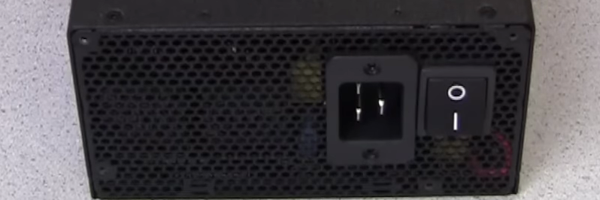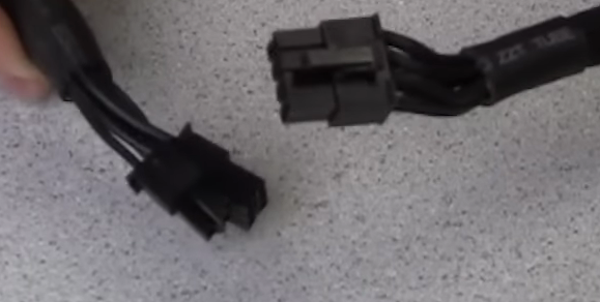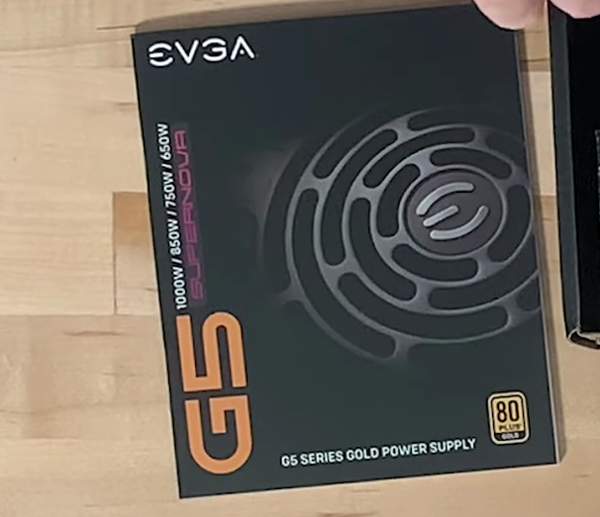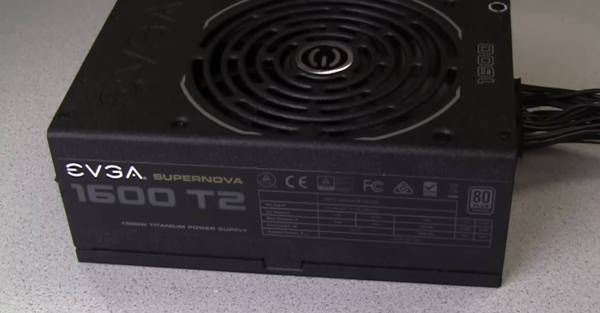Note: As an Amazon Associate I earn from qualifying purchases.
My experience with the EVGA Super Nova 850 G5 80 Plus Gold 850W Power Supply (2024)
Introduction
I recently upgraded my computer with the EVGA SuperNOVA 850 G5 power supply. In this post, I will discuss its efficiency and performance, design and cable management, noise level and cooling, as well as reliability and support. As a PC builder and efficient system maintainer, I seek products that keep their promises and last long.
Specifications
| Property | Value | Property | Value |
|---|---|---|---|
| Model Name | SuperNOVA G5 | Brand | EVGA |
| Compatible Devices | Personal Computer | Connector Type | 24-pin |
| Output Wattage | 850 | Form Factor | ATX |
| Wattage | 850 watts | Cooling Method | Air |
| Item Dimensions LxWxH | 5.9 x 5.9 x 3.4 inches | Item Weight | 7 Pounds |
Photos
Click on photos to enlarge them:
Efficiency and Performance
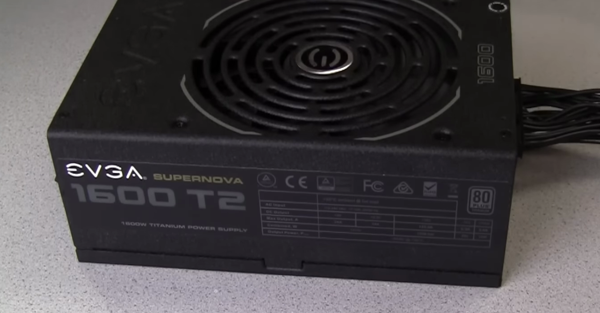
When assessing the efficiency and performance of a power supply like the EVGA 850 G5, the most noticeable feature is the 80 Plus Gold certification. In practical terms, this translates to at least 90% efficiency under typical loads, which is a significant mark of quality for any PC build interested in minimizing waste and ensuring power is being used effectively. From my experience, this efficiency is more than a sticker on the box; it’s reflective in the reduced heat output and operational cost savings over time.
Pros:
- High efficiency under typical loads
- Stable power delivery suitable for high-end components
- Reduced electricity costs over time due to high efficiency
Cons:
- Initial cost may be higher compared to less efficient units
The unit’s 850-watt output covers a broad spectrum of system requirements, from multi-GPU setups to servers with multiple hard drives. This ample headroom ensures that the PSU isn’t working at its maximum capacity all the time, which can extend its lifespan. Furthermore, the clean and stable power delivery, which is critical for performance, has been a consistent part of my user experience, ensuring that components operate without hiccups or interruptions.
While the merits are significant, I cannot overlook the economics. The upfront cost of a high-tier PSU like the 850 G5 is certainly higher than lesser-rated units. Although the efficiency savings will help recoup some of that initial outlay over time, budget builders may find it difficult to justify the investment, especially if their system doesn’t demand such high-energy output. Additionally, while the output wattage is substantial, not every user will have the need for such power, potentially making it an overestimate for less demanding rigs.
Despite these considerations, the performance gains and the guarantee of receiving clean power are compelling. In the realm of building PCs, skimping on the power supply is never advisable, as it is the backbone of the system’s stability and longevity. It’s clear that investing in a unit like the EVGA 850 G5 can offer peace of mind, especially when pushing a system to its performance edges.
My experience with the EVGA 850 G5 has thus far aligned with its advertised capabilities. It’s performed quietly in the background, easily becoming the unsung hero of my computer’s build. For anyone considering future-proofing their system or running high-performance parts, the longer-term benefits of a power supply like the 850 G5, in terms of efficiency and performance, are hard to ignore.
Design and Cable Management

When it comes to design and cable management in power supplies, the EVGA SuperNOVA 850 G5 showcases some standout features that are worth discussing. As someone who takes pride in building PCs, I can attest that a fully modular design is incredibly helpful. It allows for:
Using only necessary cables.
Minimizing clutter inside the PC case.
Optimizing airflow and thus, cooling efficiency.
Right out of the box, the SuperNOVA 850 G5 impressed me with its build quality. The power supply’s aesthetic is sleek, which is an added bonus for those with a case that has a windowed side panel. The black cables are nicely sleeved, further contributing to a clean and professional look.
The use of 100% Japanese capacitors and an active clamp plusDC-DC converter design speaks to the attention to detail EVGA has put into ensuring stable power delivery and system reliability. This focus on high-quality parts increases the overall lifespan of your power supply and maintains consistent performance.
However, a drawback I’ve noted is the length of the cables. While the generous length can be seen as a pro for larger cases, in more compact builds, it can be a challenge to neatly manage the excess cabling. Some users have found the need to purchase aftermarket cable sets or use creative routing and bundling to accommodate the additional length.
Another point I appreciate about the G5 is the inclusion of cable ties and Velcro straps. Such accessories are a godsend for achieving optimal cable management, and it’s details like these that really make the building process more seamless.
It’s not to say that EVGA’s G5 series is without its minor flaws. The SATA and peripheral cables, in particular, could see some improvement to reduce stiffness and make installation a bit more forgiving in tight spaces.
Despite these minor issues, the EVGA SuperNOVA 850 G5 has been a solid choice for me. Its strong design elements and extensive cable management tools are commendable and have greatly contributed to a tidy build with efficient airflow. Even though there could be improvements to cable flexibility and lengths, these are relatively small considerations set against the backdrop of an otherwise well-thought-out unit.
Noise Level and Cooling

When evaluating the noise level and cooling of the EVGA 850 G5, I’m looking at a few key components:
Fan Operation: The EVGA 850 G5 is equipped with a 135mm Fluid Dynamic Bearing (FDB) fan. In my experience, FDB fans are known for their quiet operation and longevity, which is consistent with the performance of this PSU.
ECO Mode: The inclusion of ECO mode is a commendable feature, which allows the fan to remain off during low to medium loads. This contributes significantly to reducing the noise level and is particularly advantageous for users who prefer a silent working environment.
Thermal Control: The PSU’s smart thermal control system effectively keeps temperatures in check without the need for aggressive fan speeds.
However, there are a couple of potential drawbacks:
Fan Noise Under Load: When under heavy load, the fan does become audible. While this isn’t a deal-breaker by any means, it’s worth noting for users sensitive to noise.
Cooling vs. Silence Trade-off: There is always a trade-off between optimal cooling and minimal noise. While the G5 manages this balance well, those running particularly intense applications might experience higher fan speeds and thus more noise.
As for the actual cooling performance, I’m impressed with how well the unit maintains a cool temperature, even under prolonged use. This is crucial because overheating can lead to hardware damage and reduce the lifespan of the PSU and connected components. The high-quality build and well-thought-out ventilation design certainly play a role in this efficiency.
From a personal standpoint, I would list the cooling and noise characteristics as follows:
Pros:
Very quiet operation at low to medium loads due to ECO mode.
Efficient thermal control, minimizing the need for high fan speeds.
Quality of fan promises durability and continued silent operation.
Cons:
Noticeable noise levels under heavy loads, which could be distracting.
Potential for a trade-off between cooling efficiency and quietness, depending on the system’s power demands.
In situations where I’m working with less demanding tasks or enjoying media, the near-silent operation of the PSU thanks to the ECO mode is genuinely pleasant. On the flip side, during intense gaming sessions or while running heavy computational tasks, there’s a marked increase in fan noise, although I wouldn’t describe it as overly disruptive.
Overall, the EVGA 850 G5 finds a sweet spot for those who, like me, appreciate a quiet PC but don’t want to compromise on cooling efficiency. While it’s not perfect, the slight increase in noise under heavy loads is a small price to pay for stable performance and well-managed thermals.
Reliability and Support

When it comes to the reliability and support of the EVGA SuperNOVA 850 G5, as an enthusiast who has tackled numerous PC builds, the credibility of a power supply is critical in maintaining performance stability. The G5 stands out with its robust feature set aimed at ensuring long-term satisfaction.
Here’s a quick rundown:
Japanese capacitors are known for their quality and longevity, fostering trust in the product’s endurance.
Fully modular design simplifies potential replacements or upgrades without upheaval.
The 10-year warranty is a strong indicator of the manufacturer’s confidence in their product.
Customer support from EVGA is reputedly responsive and helpful, which can be a lifeline in times of need.
However, I’ve identified some potential drawbacks worth considering:
The length of the cables can sometimes be cumbersome in compact builds, leading to a need for creative cable management. Also, the fan, though usually silent, can become noticeable under heavy load. This may not be a deal-breaker, as performance often equates to some level of noise, but it is an aspect to be aware of if a silent operation is paramount for you.
As part of my ongoing quest for a dependable system, I’m particular about the technical details and support network. In this pursuit, the EVGA 850 G5 has not only met but exceeded my expectations in several areas. The fully modular nature contributes greatly towards a neat build, and I’m impressed by the inclusion of high-quality components which bolster the power supply’s reliability. But what really puts my mind at ease is the comprehensive warranty accompanied by a support team that’s quick to assist when issues arise.
It’s clear that EVGA isn’t just selling a product; they’re offering a package designed to cater to the consumer’s contentment long after the initial purchase. True, I swapped out a trusty old unit for this new model seeking modernization and improvements; I did so with high hopes. And thus far, I’ve noted that it not only powers my rig efficiently but comes with the backing of reputable customer service.
While it’s still early days, and longevity remains to be tested, the SuperNOVA 850 G5 already inspires confidence through its build quality and the brand’s commendable support structure. I’m hopeful that this power supply will be the cornerstone of my system’s stability for years to come, similar to its predecessors who have gracefully retired after years of sterling service.
